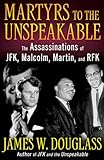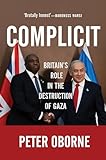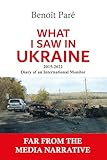On the one hand, there are the words.
In the analysis of Oleg Tsarev, the leading Ukrainian opposition leader now in Crimea, the end-of-war terms presented by the Russian side at Istanbul on Monday afternoon are “’not an ultimatum at all,’ [Russian delegation head Vladimir] Medinsky has stressed. Of course, Medinsky (lead image, left) is right. This proposal is not an ultimatum, but only a requirement for the complete and unconditional surrender of Zelensky.”
On the other hand, there is the force.
Moscow military blogger reports and the Defense Ministry bulletin on the battlefield operations of Monday indicate little change in the volume of Russian drone attacks, the Ukrainian casualties, and territorial gains around the May average. In fact, Monday’s casualty rate was fractionally below Sunday’s. While the Russian Army continues its westward advance along each of the five army group directions, there has been no resumption of the Russian electric war campaign. There has also been no reply to the Ukrainian operation of June 1 striking the strategic bomber airfields at Murmansk, Irkutsk, Amur, Ryazan and Ivanovo, and the bridge and railway attacks at Kursk and Bryansk. “I hope”, commented Boris Rozhin, author of the influential Colonel Cassad military blog, “that the military-political leadership will find a way to adequately respond. The blow should be painful… As long as we are waging a limited war, the enemy is waging a total war, the purpose of which is the destruction of our country and people. And no peace talks will change this. The longer it is in coming, the more unpleasant surprises.”
On the one hand, at the Çırağan Palace on June 1, there was the meeting of 12 Russian negotiators (unchanged from the first meeting) with 14 Ukrainian negotiators (minor changes ) for just over one hour. The Russian delegation leader, Vladimir Medinsky, then briefed the press for nine minutes. He followed the press briefing by Rustem Umerov (lead image, right) for the Ukrainian side, also reading from a notepaper like Medinsky. Umerov, the Ukrainian Defense Minister, was the nominal delegation leader but outranked by Andrei Yermak, the chief policymaker for Vladimir Zelensky in the presidential office. Yermak told the press: “The Russians are doing everything not to cease fire and continue the war. New sanctions are very important now. Rationality is not about Russia.”
On the other hand, before the three o’clock session Medinsky met in private with the nominal head of the Ukrainian delegation, Defense Minister Rustem Umerov, for two and a half hours. There has been no disclosure of who also attended on each side and what was said, except that, according to Tass, “this predetermined the effective course of further negotiations.”
This fatuity cannot conceal that real negotiations had taken place. But the realities on the ground had already overtaken the agenda, as leading Moscow security analyst Yevgeny Krutikov points out. Because the Russian side had already received the Ukrainian term sheet on May 28, and the Russian term sheet was drafted before the Sunday rail, bridge and airfield attacks, “those two memorandums…no longer correspond to the changed realities, but they will have to be discussed, because this was announced in advance, this agenda cannot be abandoned… so the main task of the Russian delegation is to translate the negotiations into a constructive course, if there is any possibility.”
On the one hand, in Moscow on Monday President Vladimir Putin had just one official meeting in the morning; this was with Maria Lvova-Belova to discuss Children’s Day and the welfare of orphans across the country.
On the other hand, in Washington President Donald Trump’s schedule for the day was empty except for lunch, which he ate at one o’clock. He has issued no tweet or press statement on Russia and President Putin since May 27 when Trump announced: “What Vladimir Putin doesn’t realize is that if it weren’t for me, lots of really bad things would have already happened to Russia, and I mean REALLY BAD. He’s playing with fire!”
Interpreted in the warfighting context, as it must be, Trump was saying that the US, including its European allies and the Kiev regime, is holding escalation dominance and intends to keep it. This means the firepower to decide what happens to Russia next without being deterred by anything Russia says or does. The “fire”, Trump meant, he intends to keep for the US and its allies in the European war. The “fire” doesn’t and won’t belong to Russia – Trump means to deter Putin from “playing” with it.
Calling the five airfield strikes terrorism rather than acts of war; dating the operational plan to the Biden Administration, not to Trump; minimizing the physical damage, cost, and number of Tupolev bombers hit; unravelling the logistical details from source of explosives to drone launch; and faulting Russian internal security and airbase defence – these details, comments a well-informed Moscow source, are “beside the point. The reality of this is on Putin. So what did he tell Lavrov to tell Trump through Rubio on Sunday night? What did he tell Medinsky to tell Umerov and Yermak for Zelensky on Monday afternoon? This is now simple strategic either/or and yes or no – no more operational tit for tat. Either Putin told Trump to order de-escalation, or Russia will escalate and destroy the enemy’s capabilities to fight on. This is the Oreshnik moment.”
A western military source responds: “I’ve read the [Russian] terms from beginning to end but I can’t find a correlation between them and what we’re seeing, full spectrum, on the battlefield. Either Putin releases the General Staff to assert escalation dominance now, or there is no point in continuing negotiations on the memorandums and term sheets, no point in ceasefires, no point at all in meeting Trump or letting him grandstand for peace. The discipline, if I can call it that, of the Russian warfighters is unrealistic.”
June 1 — here is the map of the Ukrainian strikes against the Russian nuclear bomber force:

Anticipation of an attack on these airbases, where the nuclear-capable Tupolev-95 and Tu-22M3 bombers are parked in the open to comply with Russia-US treaty inspection requirements, was published in this US source in April 2024. The satellite imagery of the five airfields and their bomber and tanker aircraft since the Sunday strikes which have been published so far does not substantiate the Ukrainian damage claims. Analysis by Oleg Tsarev of reports in Kiev of competition between the military intelligence agency GUR, headed by Kirill Budanov, and Vasily Maslyuk, head of the Security Service of Ukraine (SBU), suggests the former was in charge of the railway attacks in Kursk and Bryansk, while the SBU was responsible for the airfield operation. “Many write that behind the attack on the strategic airbases are the British. Possibly but unlikely – the GUR in Ukraine is under the MI6 while the SBU is under the CIA. These agencies compete fiercely…The consequences of competition between the GUR and the SBU will have far-reaching consequences.”
June 2 — Follow the timeline and the details of the daylong proceedings in Istanbul reported by the state press agency, RIA Novosti.
This source also revealed that an hour and a half before the main session began, the Ukrainian delegation had “met with the representatives of Germany, Italy and the UK and coordinated positions.”
Western and Ukrainian media reports indicate this meeting was at deputy ranking level, not at the level of principals. It is unclear, so far unreported, who represented the US and France following General Keith Kellogg’s announcement last week that “we’ll have what we call the E3 with us, that is the national security advisors from Germany, France, and Great Britain.” The British representative yesterday, for example, was Nicholas Catsaras, nor Jonathan Powell who was at the first Istanbul round on May 16.

No name and country identifications have been published by these sources of the deputy officials in their Istanbul meeting photograph. Sources: https://x.com/Barnes_Joe/status/1929512752793432076 and https://x.com/SpoxUkraineMFA/status/1929474274865115430
This downgrade on the western side, in parallel with the secretive Medinsky-Umerov talks, and the absence of Rubio as US national security advisor and Kellogg as Trump’s negotiator indicate there was preliminary understanding that nothing more significant would take place than public exchange of term sheets; announcement of agreement on a new and large exchange of prisoners and corpses; and the names of children Kiev is claiming for return.
Umerov has intimated that the June 2 session was little more than a mail drop and PR show. “Our teams will have a week to study the documents, after which we will be able to coordinate further steps”, he reportedly said, according to Moscow press reports. The third round is proposed by the Ukrainians between June 20 and 30.
Umerov is also reported as telling reporters in Istanbul: “If the Russians were ready for a ceasefire, their planes would not have been blown up. Russian journalists asked Umerov questions about the passenger train blown up in the Bryansk region, but he ignored them.”

The principals in the Russian delegation include Alexander Fomin (2rd from left, Defense Ministry), Igor Kostyukov (GRU), Vladimir Medinsky (Kremlin), and Mikhail Galuzin (Foreign Ministry).
Here is the full verbatim text of the Russian term sheet published in Istanbul as “Proposals of the Russian Federation (Memorandum) on the settlement of the Ukrainian crisis.”











